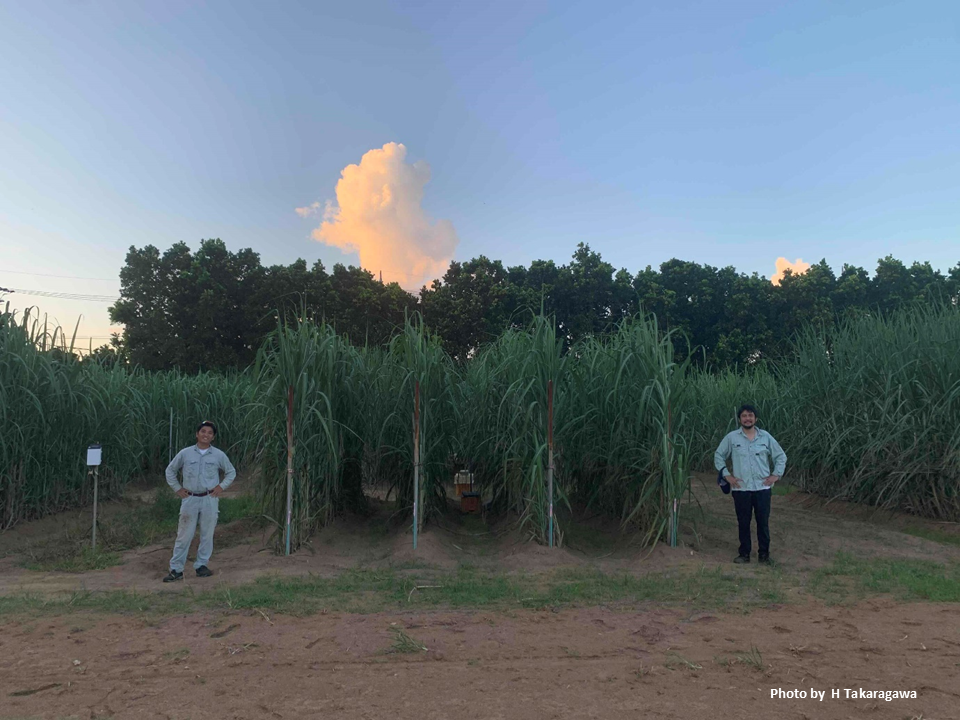Pick Up
1286. International Day of the Tropics and the Presence of TARF (Takaragawa’s Newsletter vol. 8)

1286. International Day of the Tropics and the Presence of TARF (Takaragawa’s Newsletter vol. 8)
June 29th has been established by the United Nations as the International Day of the Tropics to inform the world about the importance of research on the tropics. What comes to mind when you hear the word “tropics”? Do you think of year-round heat, squalls, jungles, and so on? If you are used to the Japanese climate, you may imagine hot and humid weather, but in other countries, there are many areas that are hot and dry. Seasonal variation also differs from region to region. Even the tropics are subdivided into various climates according to the Köppen climate classification. These climatic differences create differences in vegetation and soil, and no two tropical regions are exactly the same, even within the same climatic zone. This makes it difficult to say whether we, as researchers who focus on the tropics, are fortunate or simply facing a complex challenge. Tropical and subtropical regions encompass developing regions in Southeast Asia, Africa, and Latin America, where harsh climatic conditions and lagging economic development are common. Research in the field of agriculture, forestry, and fisheries in these regions should bring benefits such as stabilizing the earnings of local producers, stimulating local economies, and strengthening food security.
JIRCAS's sole substation, the Tropical Agriculture Research Front (TARF, commonly known as Nekken), is a research institute located on the subtropical island of Ishigaki. In addition to its climatic characteristics, TARF utilizes a vast 21-hectare experimental field to conduct research on environmental stress tolerance and disease resistance in crops such as sugarcane, tropical fruit trees, and rice. It also conducts studies on interactions between agriculture and the environment including weather and soil, using open laboratory facilities such as lysimeters that can investigate groundwater. Furthermore, TARF carries out research on stable production methods for greenhouse crops like tomatoes and strawberries, among others.
The above is a general introduction. For me, conducting trait development research based on abundant materials and a fulfilling environment (climate, people) is very exciting. However, I sometimes find myself wondering: "Am I doing research that relies on materials, or what is my role (why should it be me)?” Extending this line of thought to the organization, I ask: what does TARF's presence mean? And what makes it different from other tropical research institutes in Japan and abroad? I still cannot explain these things elegantly. I vaguely understand the geographical advantages of subtropical climates and island regions, but what climates have TARF been able to reproduce (or not) among the tropical regions of the world? There was a time when, due to travel restrictions during COVID-19, researchers from other departments actively conducted research at TARF. Does that signify TARF's presence? Different researchers may have different concepts of "presence" depending on their individual position and scope of activity, affiliation, organization, region, nation, or global context. The following is a brief summary of my thoughts on TARF's presence and future directions.
Individual Researcher's Perspective on the Presence of TARF
- TARF researchers: A site for technology development (demonstration sites are both domestic and international, mainly overseas), and a site for the collection of genetic resources and characterization information.
- Other JIRCAS researchers: A pre-demonstration site for the tropics, and a source of tropical crop genetic resources
Research Institutions' Perspective on the Presence of TARF
- TARF: A place for interdisciplinary research that utilizes genetic resources and characterization information to develop research through collaboration among different specialties.
- Other institutions: A site for breeding cooperation using tropical environments (e.g., rice: generation advancement; sugarcane: hybridization), and a platform for developing human resources by helping young researchers and students broaden their perspectives
Local Perspective on the Presence of TARF
- Japan: A collaborator with other domestic institutions; a provider of technologies and information for Japan's southwestern islands and warmer regions, and a training ground for Japanese researchers preparing for work overseas
- World: A central hub in a genetic resource research network (especially for Southeast Asia), and a training site for researchers who will take on leadership roles in overseas institutions.
Contributor: TAKARAGAWA Hiroo, Tropical Agriculture Research Front
